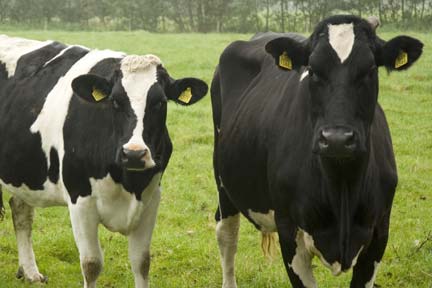The use of manure granulation is a unique and beneficial opportunity for the agricultural industry. While many farmers use untreated manure to fertilize their soil, there are drawbacks to this practice. For example, manure that is not pelletized is difficult and costly to transport. Additionally, the quality and nutrient content within unprocessed manure may vary greatly, making it difficult to properly treat soil and yield optimal results. Manure granulation not only assists in efforts to follow waste disposal regulations, but also creates a potential new source of revenue, making this process a win-win proposition.
Preconditioning for Organics Granulation
A significant aspect in creating an agglomerate or granule is preconditioning the material to the proper moisture level. Different materials have varying windows of moisture they may contain that will allow agglomeration to occur. In the case of organics granulation, the material must include approximately 45 to 55% moisture in order to create manure granules. Although this is a forgiving agglomeration range in comparison to other industries, preconditioning is still critical. If the material is too dry, it will simply mix around; if the material is too wet, it will remain in its slop-like state.
Granulating Manure
Manure granulation, a process also referred to as pelletizing manure, is a method of agglomerating manure into a dry product known as granules, pellets, or agglomerates. While there isn’t a ‘one size fits all’ manure granulation process, there are two general categories of tumble growth organics granulation: pan granulation systems and mixer-dryer systems.
Pan Granulation Systems
Best Used With: Compost, Chicken Litter, Beef Cattle Manure
- Raw materials with a lower moisture content and finely ground feed benefit from pan granulation systems.
- Particle size is critical to this system because coarse fibers, such as bedding, may be mixed into this material. As a result, a grinding step is often performed before material is mixed. Additionally, mixtures containing a high percentage of coarse fibers will interfere with the ability to create consistent, quality manure granules.
- A pin mixer or paddle mixer is used to thoroughly mix the raw material with recycle and liquid (binder). Prior to mixing, dust is contained within enclosed equipment. Adding liquid brings the moisture to the appropriate level and removes dusting issues. In addition, the pin or paddle arrangement and rotational speed can be adjusted according to the size of the desired agglomerate.
- A pan pelletizer, also known as a pan granulator, is used to improve the efficiency and quality of the final product. It offers control through variations in speed, incline, and liquid spray mechanisms, creating a more dense and rounded granule.
- A rotary dryer is used to dry material evenly and efficiently. It also rounds the granule to create a more uniform and quality final product.
Mixer-Dryer Systems (also known as a High Back Mix System)
Best Used With: Dairy Manure, Municipal Sewage Waste, Chicken Manure from Layer Birds
- Raw materials with higher moisture content, such as a sludge or slurry, benefit from a mixer-dryer manure granulation system. While a higher moisture level is permissible, any materials with more than 75-80% moisture will require mechanical separation.
- A paddle mixer is used to bring the moisture content of the overall mixture down to the appropriate level for agglomeration. The mixture consists of 25 to 75% raw material, with recycle comprising the remaining amount. In addition, the paddle arrangement and rotational speed can be adjusted according to the size of the desired agglomerate.
- As with pan granulation systems, a rotary dryer is again used to evenly dry the granules and ultimately create a uniform and quality final product.
The Benefits of Organics Granulation
In comparison to traditional manure, the manure granulation process creates a number of advantages, such as:
- Consistent quality and nutrient quality among granules.
- Improved physical and chemical conditions in fields where pellets are applied. Specifically, organic pellets help a soil retain nutrients, reduce erosion and nutrient run-off, and create a healthy soil for plant growth.
- Reduced material volume (when compared to raw compost), decreasing the overall storage space required.
- Reduced quantity of dust and dust-related issues. Dried pellets produce only one-tenth of the dust generated by distributing standard compost.
- Retained pellet form when stored and maintained shape when applied to a field.
- Ideal for mechanized spreading & precision agriculture.
- Able to transport pellets easily and farther than typical manure transportation limitations allow.
Whether you need help determining the right equipment for your process, or you would like to test if a material can be transformed into a waste-to-value added product, FEECO has you covered. For more information on FEECO’s organics granulation experience, contact us today!
Download our FEECO Organics Granulation Paper (4908 downloads )


